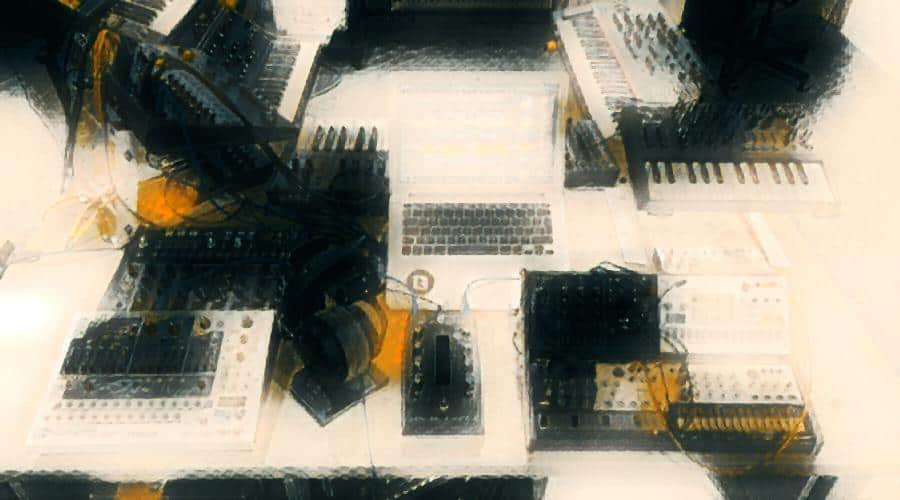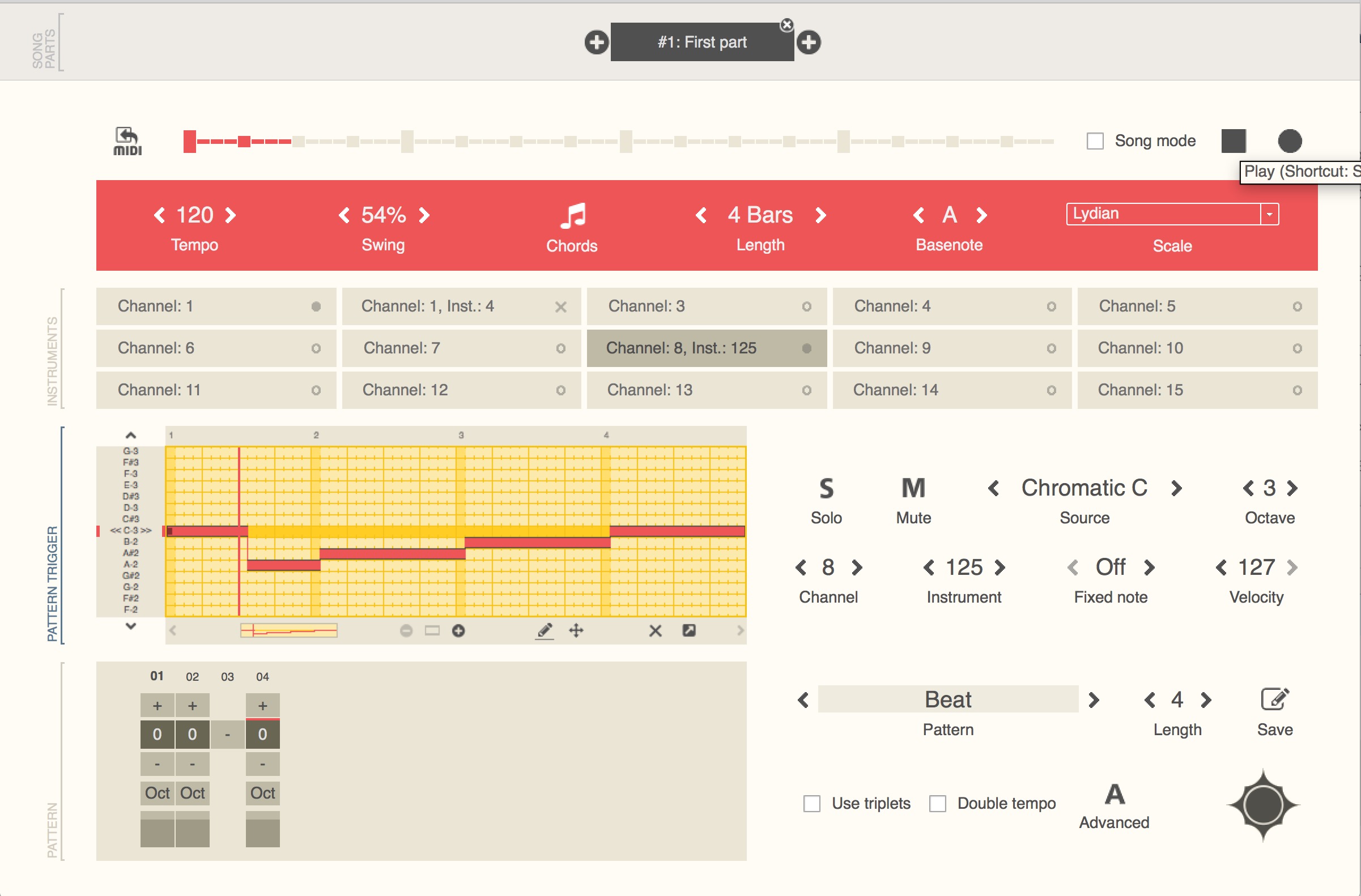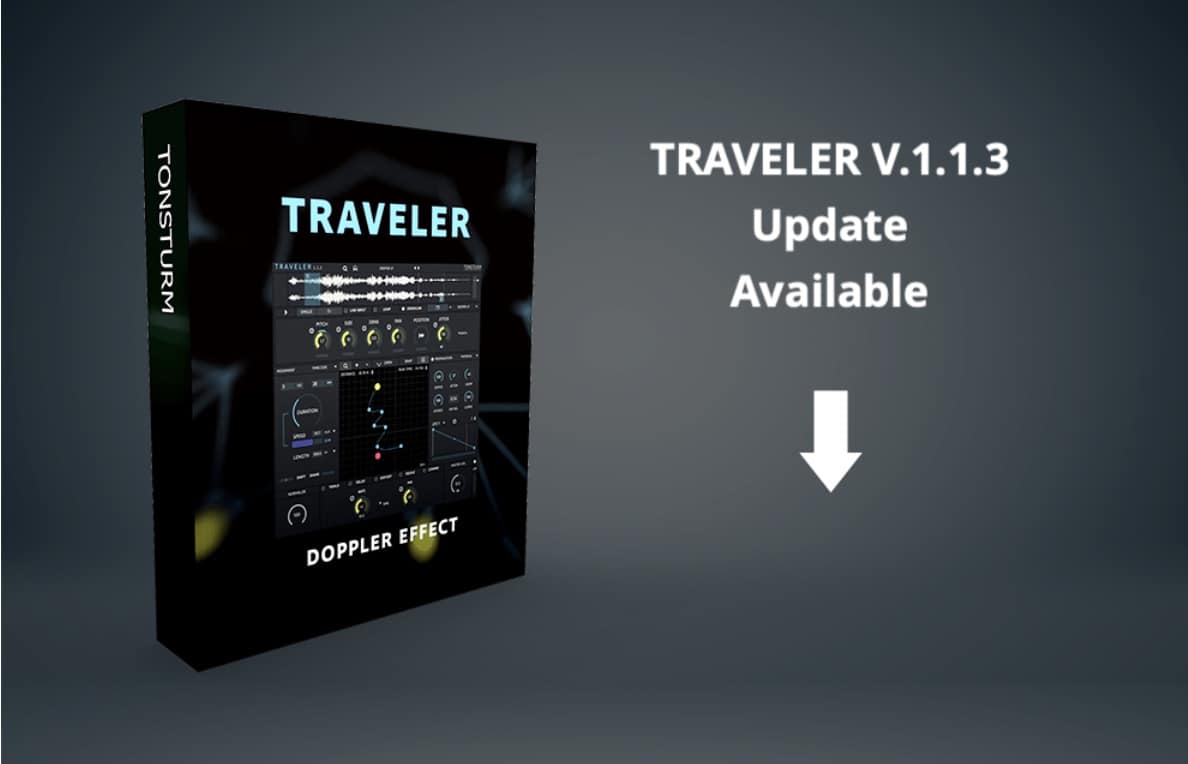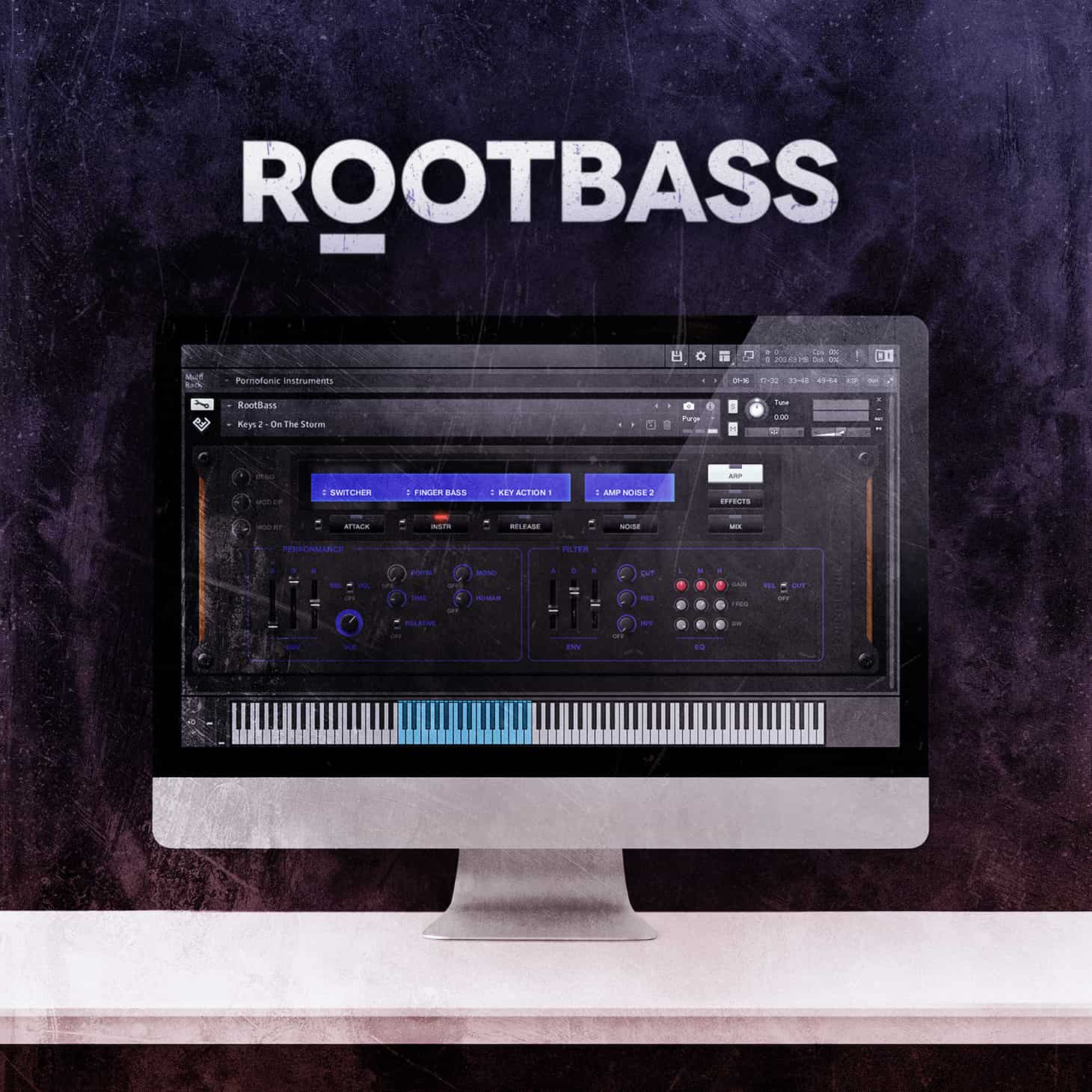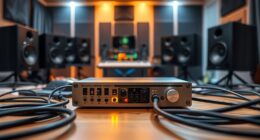The Most Used Ableton Stock Effects
Ableton is a powerful music production software used by many top DJs and producers to create amazing-sounding mixes. For years, Ableton Live has been the go-to Digital Audio Workstation (or DAW) for many music producers, DJs, and touring musicians. Over time, Ableton has gained a lot of popularity among new artists and sound designers.
One of the wonderful specialties about Ableton is that it comes with a lot of built-in plugins that you can use to create professional-sounding mixes. In this blog post, we will take a look at some of the most used Ableton stock effects and show you how to use them to create awesome sounding mixes!

Are Ableton Stock Effects Good?
Ableton may be configured to create high-quality music in a number of ways. It includes premium quality stock plugins, which are essential for any producer.
At StrongMocha, we create music production and sound design for a variety of applications. Recently, we were working to create an album of ambient music.
We decided to use Ableton as our DAW because it has so many different options for creating these types of sounds and it also comes with some great plugins that can be used very effectively when making ambient music.
Best Ableton Live Stock Plugins
Ableton Live comes with a variety of built-in plugins that can be used for a variety of tasks. Some of these plugins are more CPU-friendly than their third-party counterparts, making them a better choice for certain tasks.
Additionally, the plugins are optimized to run inside of Ableton, which can be helpful for those who are not as familiar with plugin settings and configurations. Finally, some of Ableton’s effects are rather simple to use, and I always recommend people start on them before moving on to the third-party plugin replica where things might become a little too complicated and you risk developing choice paralysis not knowing what to move.

Ableton Saturator
The Ableton Saturator is likely to be the next stock effect that I employ the most. And for good reason: when you’re looking to beef things up, you can’t go raw with saturating them. Instead of EQing in a saturated style, it’s very simple to use, although you may also employ it in a complex structure where you start to wave shape and tinker with these settings over here.

Many will use Saturator for some of the simpler curves and increase the effect of the Saturator. This can be a great way to add some extra power to your tracks and make them sound their best.
When it comes to saturation, it’s usually best to add just a touch in order to give the track some extra excitement. If you add too much saturation, you can easily create distortion, which will not sound very good. However, if you find the right balance, saturation can be a great way to make your tracks sound their best.
The Utility Effect
One of the most underutilized effects in Ableton Live is the utility effect, which will undoubtedly be one of the most useful for me for a few reasons. Although it only has a few knobs, it may be quite useful for certain activities.
If you have performed on Eurorack or Semi-Modular Synths you are familiar with the idea to use LSO to shape sound or effect. Now you get the idea of the Utility Effect. If you’ve ever been in a situation where you wished to automate the level of something inside Ableton, this might be helpful.
For example, you go to the master output of whatever instrument you’re using and perform something like this: it might be difficult to level this. With the utility effect, the instrument’s LFOs can be shaped. Setting the gain through Utility Effect may automate certain settings and parameters.
The Utility Effect can also drive the next effect on this list: Ableton Echo
Ableton Echo
The Ableton Live stock effect that I utilize in my tracks the most is the echo found within Ableton live. It’s simple to dial in the echo when I know what I want. So, for example, you have this lovely art music that doesn’t seem particularly exciting on its own. If I want to modify the delay, I can also alter it by using stock delay. We can also add a little of reverb if I want the delay to sound somewhat more ambient.

We can also get more complex with the echo. For example, we can add feedback and modulation to create some really cool sounding echoes. Additionally, we can use the filter to change the sound of the echo.
This can be really helpful for creating unique sounds and textures. Finally, we can use the delay time to change the timing of the echo. This can be great for creating interesting rhythms and grooves. The textures are there, we can adjust the timbre. Changing the filter is one of the simplest modifications to make that won’t ruin it.
You can also see how the delay becomes much more dynamic, full, and has a lot of motion when you combine it with live drums.
The atmospheric lofi effect is a particularly spooky way to make your song sound. If programmed, you may get this sort of strange lofi effect. Echo is a simple or complex procedure that involves either adding some similar character to a sound or generating echoes.
Auto Pan
The Auto Pan effect is great for creating a sense of movement in your track. By using the auto-pan effect, we can create a sense of movement in our track. This can be great for adding some extra flavor to our mix.

Create your own tremolo, a synchronized chopping effect, sidechain, or use the Envelope follower as an automated pan. Change the waveform to a sine wave, sawtooth, triangle, or pick it at random and control the amount, rate, phase, and shape of the signal.
By automating the panning of our track, we can create a sense of movement and motion. This can be great for creating a more dynamic mix.
Convolution Reverb
Another wonderful stock effect available in Ableton Live Suite is the Convolution Reverb. With this one, you’ll need the entire suite to access it. The algorithm is different because the same problem was solved by using a function of only two parameters instead of three.
Instead of creating its own computer-generated material to use as a basis for reverb tails and modes, as most convolution reverbs do, this one takes materials from popular music producers and processes them through various kinds of algorithms in order to create an immense variety of spaces and atmospheres.
The convolution reverb is a great way to add some really unique sounding reverbs to your track. By using samples from popular music producers, we can add some really cool sounding reverbs to our track. This can be great for adding depth and dimension to our mix.
Additionally, the convolution reverb is great for creating unique sounding atmospheres. By using different algorithms, we can create a variety of different sounding spaces and atmospheres. This can be great for adding some flavor to our mix. I use this effect the most on drums to add reverb to my beats.
Mono Mode
We also have a mono mode in Ableton. This is great for when you want to mix your track down and you only have one output. You can use this mode to make sure that everything is coming out of the one speaker.
This can be a great way to clean up your mix and make sure that everything is coming out of the one speaker. By turning on mono mode and selecting the frequency at which you want to split the signal, you can make sure that everything below that frequency is in mono.
We can mono a track or instrument by turning on mono mode and selecting the frequency at which we want to split the signal. This can be a great way to clean up our mix and make sure that everything is sounding its best.
The Glue Compressor
One of my and many others most utilized Ableton stock effects is the glue compressor. The Compressor, like the SSL console, is inspired by an old-fashioned eighties. Now you get the hint.
The glue compressor is great for gluing the sounds together. By compressing the sound. The glue compressor is great for automating the volume of your track.

By compressing the sound, we can make sure that everything is sounding its best and that everything is coming through clearly. This can be great for creating a clean and polished mix. The bass is louder, more detailed, and more apparent in the mix. Everything feels a bit more glued together and it just fits in rather than sounding boring.
Ableton AMP
Ableton Amp is a guitar amplifier simulation effects plugin. It has a built-in cabinet emulator that allows you to emulate the sound of a guitar cabinet.
The Ableton Amp plugin is great for emulating the sound of a guitar cabinet. By using the cabinet emulator, we can create the sound of a guitar cabinet.
This can be great for adding some extra character to our guitar tracks. Guitar Pedals is an effect pedal bundle for guitarists, with 6 distinct effects: clean, boost, blues, rock, lead, heavy, and bass.
Every element of the signal, from gain to bass to middle to treble to presence to dry/wet balance, and mono/stereo output, can be controlled.
Frequency Shifter
The Ableton Frequency Shifter is great for shifting the frequency of your sound. By using the frequency shifter, we can create the sound of a guitar cabinet.
This can be great for adding some extra character to our guitar tracks. You can also add ring modulation to the incoming signal by moving up the spectrum. This plugin, which is based on an LFO, allows you to adjust the amount, rate, spin, and mix in one plugin.
Operator
FM synthesis, subtractive, and additive synthesis are all used in this synthesizer to create harsh leads, dirty percussions, and synthetic sounds.
As you can modulate the frequencies of all four oscillators with one another and alter each oscillator’s ADSR and waveform individually through its interface, you may create a wide range of sounds.
Analog
A detailed description of every phase of sound creation can be found in Analog. Create a waveform, run it through several filters, an AMP, LFO, and the core mixer, then add more noise to your sounds.

Sampler
Sampler takes sampling to the next level. Sampler is an Ableton device that converts any sample into an instrument. Sampler is a unique tool that will provide a different perspective on sampling sounds. Import each sound into the sampler and modify or add any additional characteristics to the sound.
In addition to the essentials (for example, shift, reverse, and pan), more advanced features like sample start and end, loop start and stop, crossfade, pitch/oscillator tab, filter tab, and modulation are included.
This gives you a plethora of methods to alter these samples that aren’t available in many third-party sampler plugins.
Wavetable
The Wavetable is a powerful synthesizer from Ableton that opens up a world of creative potential. The Wavetable gives you immediate feedback, so you can see what is happening.
By using the wavetable, we can shape the sound. This can be great for adding some extra character to our guitar tracks. The wavetable allows you to morph between two different waveforms and provides an easy way to preview the waveforms.
The wavetable is perfect for creating evolving pads, leads, and basses. You can also add a bit of grit to your sounds by using the Wavetable’s distortion.
EQ Eight
The EQ Eight plugin is great for mixing. You may set the EQ on up to eight bands, allowing you to customize the sound signal to your preferences.
It’s also really simple to use, unlike many Ableton stock plugins. I rely on it for nearly every track when I’m mixing inside Ableton.
Conclusion
Overall, Ableton Live comes with a variety of great stock plugins that can be used for a variety of tasks. Some of these plugins are more CPU-friendly than their third-party counterparts, making them a better choice for certain tasks. Additionally, the plugins are optimized to run inside of Ableton, which can be helpful for those who are not as familiar with plugin settings and configurations.
Finally, some of Ableton’s effects are rather simple to use, and I always recommend people start on them before moving on to the third-party plugin replica where things might become a little too complicated and you risk developing choice paralysis not knowing what to move.

The content above provides a brief overview of some of the most commonly used stock effects in Ableton Live Suite. These effects can be great for adding depth and dimension to your mix, creating a sense of movement and motion, and adding flavor to your track. Additionally, the convolution reverb is great for creating unique sounding atmospheres.
The most commonly used Ableton stock effects are Ableton AMP, Frequency Shifter, Analog, and Operator. These plugins are great for adding character to your tracks and helping you to create professional-sounding mixes. The EQ Eight plugin is also great for mixing and is simple to use.

